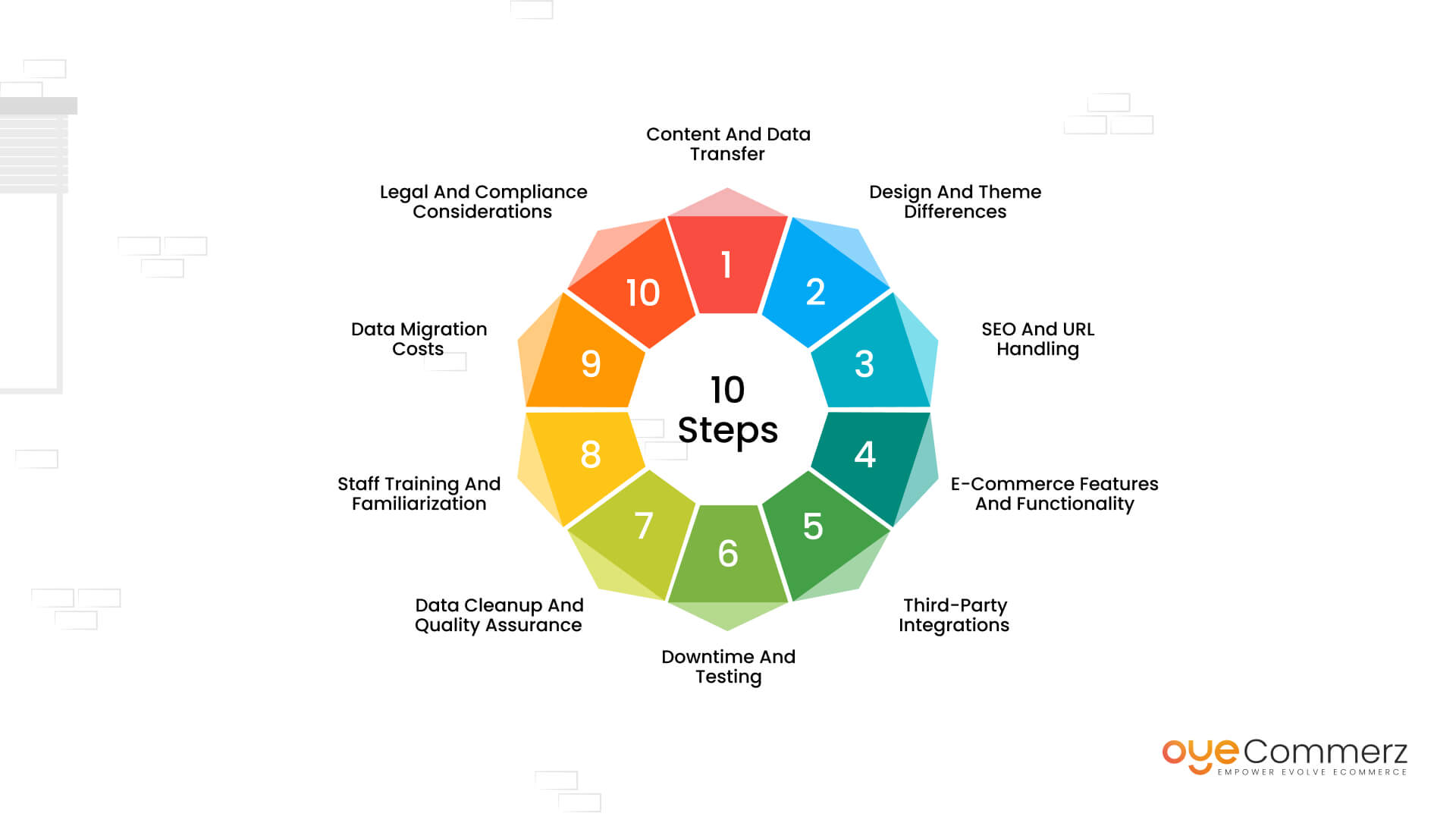Transitioning from WordPress to Shopify is an exciting step in streamlining your online store operations. As companies grow, selecting a solution that aligns with scalability, user experience, and flexibility is essential. Shopify has emerged as a favorite for e-commerce professionals, offering unmatched flexibility, data protection, and user-friendliness. In this guide, we’ll explore the transformative impact of this migration, highlight the benefits, and provide practical tips to ensure a smooth transition.
1. Why Migrate from WP to Shopify?
The combination of WordPress and WooCommerce, continues to support countless online stores. Nevertheless, as businesses expand, challenges like reliance on plugins, security vulnerabilities, and complex setups often obstruct growth. Shopify, specifically created for e-commerce, addresses these concerns with an all-in-one, user-friendly solution. Real data supports this transition—Shopify hosts over 4.4 million stores worldwide, with a documented 10% boost to sales conversion rates for many businesses after migration.
2. Key Benefits of Shopify for E-commerce Success
Shopify’s robust ecosystem is tailored for scaling brands. Its standout benefits are:
- Seamless Customization: Shopify offers over 80 professionally designed themes.
- Built-in Features: Capabilities such as Shopify Payments and integrated SEO save time and effort.
- Global Reach: Multi-currency support and regional customization enable businesses to reach global markets.
Additionally, Shopify boasts an uptime rate of 99.98%, guaranteeing your store remains accessible.
3. Getting Ready for Your WP-to-Shopify Transition
Prior to starting the migration process, assess your existing setup. Analyze inventory details, customer details, and SEO performance. Resources such as Shopify’s Migration Kit or external tools help ease the transition. Create a comprehensive plan, making sure all assets—item details, images, and articles—are optimized for transfer.
4. Data Migration: A Critical Step
Data migration is a cornerstone of a smooth platform switch. When migrating from WP to Shopify, prioritize:
- Inventory Details: SKU, descriptions, and categories.
- Customer Data: Emails, order history, and preferences.
- SEO Optimization: Retain meta tags, URLs, and redirects to avoid SEO losses.
Leverage apps like LitExtension to facilitate seamless migration while minimizing errors.
5. Customizing Your Shopify Store
After the move, personalizing your Shopify store helps it aligns with your business identity. Utilize Shopify’s drag-and-drop editor to create layouts with ease. Shopify's templates are optimized for all devices, ensuring a seamless UX across platforms—a key point, given 74% of online shopping comes from mobile visitors.
6. Maintaining SEO During Migration
SEO is vital for preserving your online presence during migration. Shopify excels in SEO with organized link formatting, built-in optimization tools, WordPress vs. Shopify for eCommerce and smooth content management. Ensure:
- Set up URL forwarding for existing links.
- Enhance updated content with targeted phrases.
- Use Shopify's apps Plug in SEO to track analytics after the switch.
7. Essential Tests After Migrating to Shopify
Once the migration is complete, conduct thorough testing.
Review: - Website speed (Shopify delivers faster speeds in contrast with WordPress).
- Payment integration reliability and transaction flow.
- Mobile responsiveness.
Quality assurance guarantees your store delivers a seamless shopping journey from day one.
8. Real-Life Success Story
An example of effective platform switching is Gymshark, a fitness apparel brand that moved to Shopify. After the switch, the company saw a 60% boost in mobile sales and significantly lowered site downtime. This showcases the potential of Shopify in enhancing online business success.
9. Challenges and Solutions
Migration comes with challenges, such as information accuracy and reconfiguring custom functionalities. However, Shopify’s robust support and third-party Shopify cart migration experts make overcoming these hurdles manageable. Collaborating with experienced Shopify developers helps guarantee a smooth transition.
10. Making the Switch: The First Step Toward Success
Migrating from WordPress to Shopify represents a forward-thinking approach to e-commerce. By focusing on growth, streamlining operations, and enhancing the customer experience, Shopify empowers businesses to thrive in challenging industries.
Final Thoughts
Switching from WordPress to Shopify offers a smart solution that can greatly enhance your e-commerce success. With a well-structured strategy, the right tools, and professional guidance, you can achieve new success milestones.
Ready to make the leap? Reach out today to learn how our Shopify migration services can transform your e-commerce platform. Contact us now, or consider: Is it time to seize Shopify’s advantages for your store?
